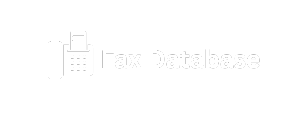The Front-End is the How does part of the website that you see and interact with directly, a simple way of viewing it, it is like the “shop window” of your website. Everything that appears on the screen of your computer or cell phone, such as texts, images, buttons and menus, is part of the Front-End, and when you click on a button or fill out a form, you are interacting with the Front-End.
Front-end developers use languages such as
HTML, CSS and JavaScript to create this interface. In general, HTML is responsible for the structure of the website, CSS takes care of the appearance (colors, fonts, layout) and JavaScript adds interactivity (animations, form validation, etc.).
The Back-End is the part of the website that you don’t see, it works behind the scenes, ensuring that everything works correctly.
The backend is responsible for a number
Of tasks, such as storing data (in databases), processing requests (such as when you log in), and ensuring that the writing helps develop speaking skills website runs quickly and securely. Backend developers use languages such as PHP, Python, Ruby, and Java to write the code that makes all of this happen.
Is it easy to understand how a website works? Let us explain a little.
How do Front-End and Back-End work together?
For a website to function smoothly, the Front-End and Back-End need to work together. For example, when strategy for produc revenue from you fill out a form on the Front-End and click “Submit,” the data is sent to the Back-End, which processes the information and returns a response to the Front-End.
Or, for example, if you log in to a website, the Back-End verifies your credentials and tells the Front-End whether the login was successful or not.
Practical Examples of Front-End and Back-End
Read also: What would the world be like without the internet?
Layout
Website Layout
A website’s layout or design is mobile lead how the visual elements are arranged on the page, and a good layout is essential to ensuring that the site is easy to navigate and visually appealing, whether viewed on a laptop or on a mobile device.
The layout structure defines the basic
Organization of the! page! including the header! footer! sidebars! and main! content! area. A well-planned! structure helps ! users find information! quickly and have simple, uncomplicated navigation.
